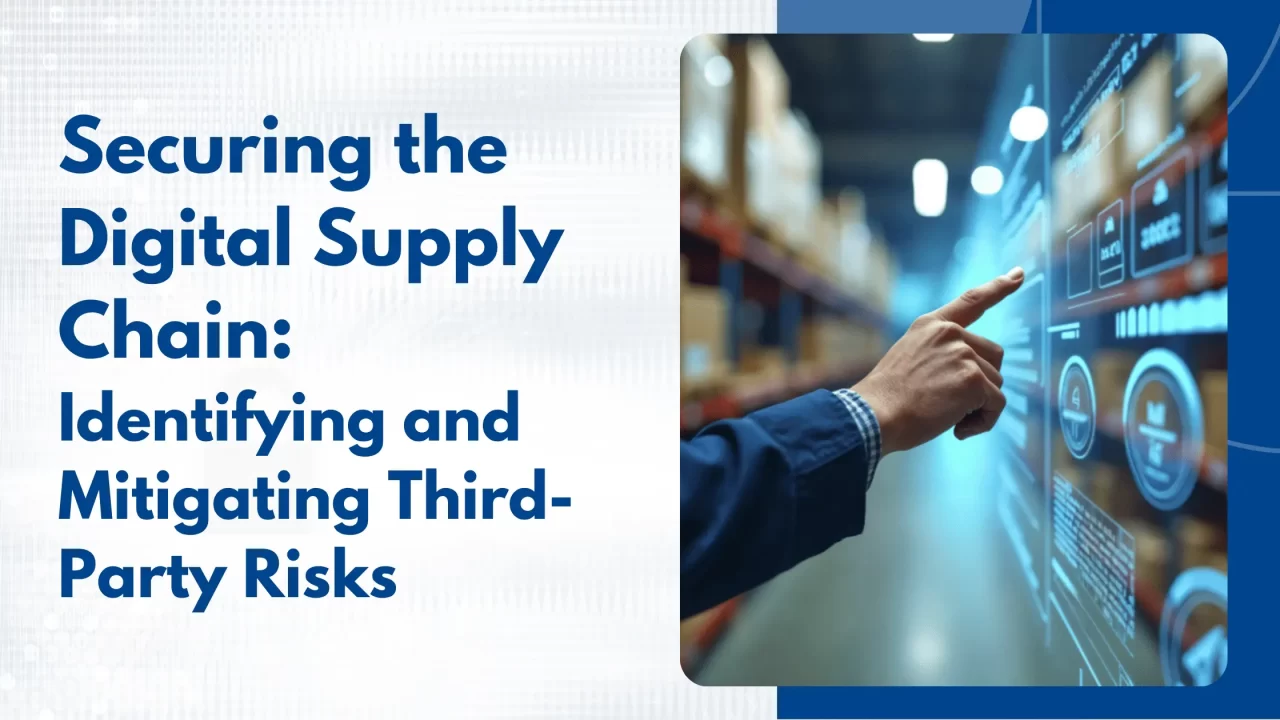In an increasingly interconnected business ecosystem, your cybersecurity is only as strong as the weakest link in your supply chain. From software vendors to IT service providers and cloud platforms, third-party partners have access to critical systems and sensitive data. If they are compromised, so are you.
This blog explores the risks posed by third-party vendors, real-world breaches stemming from supply chain failures, and how Indian businesses can strengthen digital supply chain security.
What is Supply Chain Risk in Cybersecurity?
Supply chain risk in cybersecurity refers to the vulnerabilities introduced into your systems and data due to third-party products, services, or partners. These risks can emerge through:
- Unpatched software from vendors
- Poor security practices by partners
- Insider threats within supplier organizations
- Data sharing with non-compliant providers
- Lack of transparency or visibility into third-party operations
Such risks can be exploited by attackers to infiltrate your environment, exfiltrate data, or disrupt operations—often bypassing perimeter defenses.
Why Indian Businesses Must Pay Attention
India’s growing digital ecosystem is heavily reliant on IT services, outsourced support, SaaS solutions, and vendor-driven infrastructure. This dependency, while efficient, opens the door to supply chain-based attacks.
High-profile breaches like the SolarWinds incident globally, and ransomware attacks on managed service providers (MSPs) in India, highlight the real-world consequences of ignoring this threat vector.
Additionally, Indian data privacy regulations and compliance frameworks such as ISO 27001 and DPDPA hold organizations accountable for third-party risk management.
Common Types of Third-Party Security Risks
1. Software Supply Chain Attacks
Attackers inject malicious code into trusted software updates or libraries, compromising every user who installs them.
2. Insecure APIs and Integrations
Many cloud apps and services connect via APIs. Poorly secured APIs can serve as backdoors for attackers.
3. Compromised Credentials of Partners
If a vendor employee’s credentials are stolen, attackers may gain direct access to your systems.
4. Shadow IT and Unsanctioned Vendors
Departments may engage vendors without formal vetting, bypassing IT security protocols.
5. Non-Compliance and Poor Cyber Hygiene
Third parties may not follow cybersecurity best practices or compliance requirements, exposing your organization to regulatory and operational risks.
Steps to Secure Your Digital Supply Chain
1. Conduct Third-Party Risk Assessments
Before onboarding any vendor, assess their security posture, data handling processes, and compliance certifications such as ISO 27001. Ask for security audit reports or penetration test summaries.
2. Include Security Clauses in Contracts
Define SLAs for cybersecurity, incident reporting timelines, access limitations, and liability in the event of a breach. Legal alignment is key to enforceability.
3. Monitor Third-Party Access Continuously
Use identity and access management tools to control, limit, and monitor vendor access. Implement Just-In-Time (JIT) access and strong multi-factor authentication.
4. Leverage CNAAP for Cloud-Native Vendor Oversight
Vanaps’ Cloud-Native Application Protection Platform (CNAAP) helps:
- Monitor connected workloads and APIs
- Detect unusual behavior across cloud infrastructure
- Enforce policy-based access controls
- Ensure that all third-party cloud activity is tracked and secured
5. Maintain a Vendor Inventory and Risk Register
Document all vendors, the data they handle, and the level of risk they pose. Regularly update this list and conduct periodic reviews.
6. Train Internal Teams on Third-Party Risk Awareness
Procurement, legal, IT, and leadership should all understand the implications of supply chain risk. Equip them to ask the right questions before engaging a vendor.
7. Have an Incident Response Plan for Third-Party Breaches
Prepare for scenarios where a breach originates from a third party. Your plan should define communication channels, response workflows, and data recovery steps.
Regulatory Considerations in India
- DPDPA (Digital Personal Data Protection Act): Businesses must ensure that personal data shared with third parties is secured and that vendors adhere to lawful processing norms.
- CERT-In Guidelines: Mandatory reporting of cyber incidents, including supply chain breaches.
- ISO 27001: Emphasizes supplier relationship security as a key control area.
Non-compliance can lead to legal penalties, reputational damage, and operational disruptions.
Conclusion
Your cybersecurity strategy is incomplete without a third-party risk management plan. Indian businesses must go beyond questionnaires and contracts to implement technical controls, continuous monitoring, and enforceable accountability.
In an era where software and services are increasingly outsourced, resilience lies in knowing exactly who has access, what they can see, and how they are secured.
Concerned about third-party risks in your digital supply chain? Book a one-on-one consultation with Vanaps and take proactive steps toward better supply chain security.



